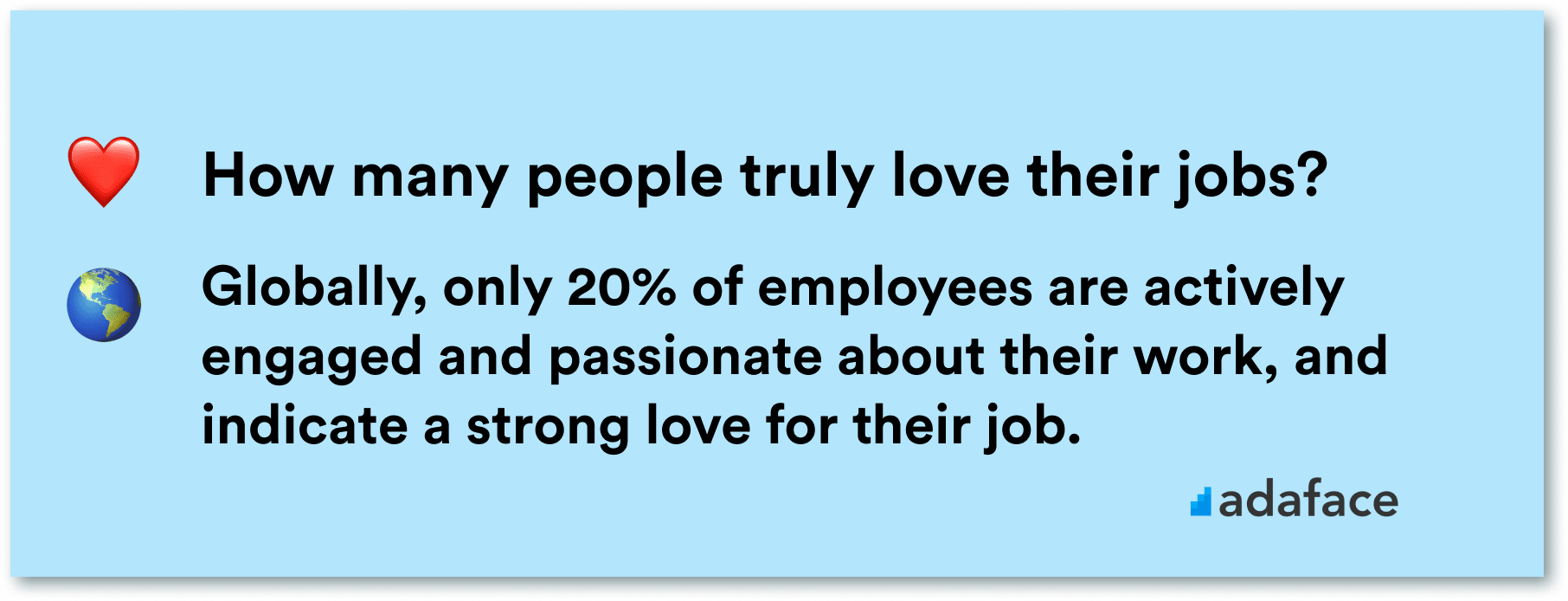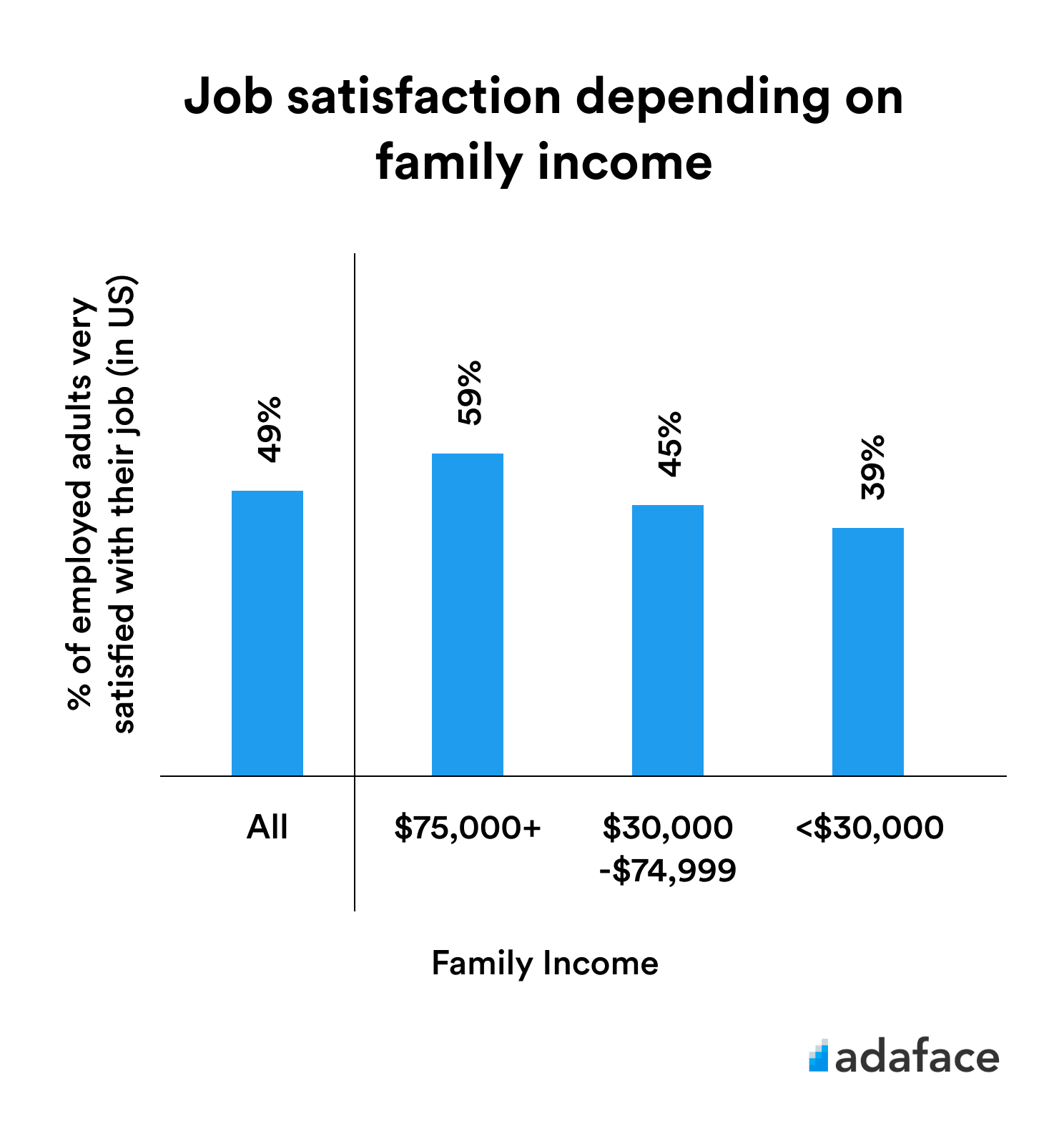

As HR managers, we're constantly looking for ways to boost happiness, engagement, and overall job fulfilment within our organizations. After all, a content and committed workforce is the secret ingredient to building a thriving company culture.
In this blog post, we're diving headfirst into the fascinating world of employee satisfaction. We'll explore the latest trends, mind-blowing statistics, and actionable insights that will make your HR heart skip a beat (in the best way possible).
Let's get started!
Before getting into it, let's answer the big question:

Key takeaways from all the statistics
Before diving in, we'll give away the key takeaways from all the 25+ statistics we are about to explore.
- Embrace flexible work arrangements: Recognize the importance of offering flexible work options, such as remote work or flexible schedules. These arrangements positively impact job satisfaction and can attract and retain top talent.
- Cater to generational preferences: Understand the unique needs and preferences of different generational cohorts. Tailor your recruitment and retention strategies to address their specific desires, ensuring a better fit between the organization and its employees.
- Foster a positive company culture: Prioritize diversity and inclusion initiatives within your organization. Cultivate an environment where all employees feel valued and included, significantly contributing to job satisfaction.
- Implement effective employee recognition programs: Establish robust systems for acknowledging and rewarding employee contributions. A well-designed recognition program can boost job satisfaction and create a sense of appreciation and motivation among employees.
- Stay mindful of startup environments: If your organization operates in a startup-like setting, be proactive in nurturing a positive work environment. Foster innovation, provide opportunities for growth and create a supportive culture that encourages employee satisfaction.

American job satisfaction
- A significant share of workers in the U.S. (30%) view their work as “just a job to get them by” rather than a career or a stepping stone to a career.
- About half of U.S. workers describe their job as a career, while 18% say it is a stepping stone to a career.
- Workers with a postgraduate degree are the most likely to say their job gives them a sense of identity (77%), while 60% with a bachelor’s degree, 48% of those with some college education and 38% of those with a high school diploma or less say the same.
- Half or more of Americans who are self-employed (63%) or who work for a nonprofit organization (56%) or the government (66%) see their job as a career, while 44% of those who work for a private company say the same.

Job satisfaction based on profession
- Physicians and Surgeons: 90% of physicians and surgeons reported job satisfaction in a Medscape survey.
- Teachers: A little more than half of teachers are satisfied with their jobs, and only 12% say they’re “very satisfied” with their jobs, down from 39% in 2012.
- Information Technology (IT) Managers: 80% of IT managers reported job satisfaction in a survey conducted by the Society for Information Management.
- Veterinarians: 88% of veterinarians reported job satisfaction in a survey conducted by the American Veterinary Medical Association.
Job satisfaction based on the type of employment
- Full-time employees: 81% of full-time employees reported job satisfaction in a survey by SHRM.
- Freelancers: 67% of freelancers surveyed were more optimistic about their job or career opportunities as a freelancer.
- Self-employed individuals: 79% of self-employed individuals reported job satisfaction in a survey conducted by FreshBooks.
- Remote workers: 80% of remote workers reported job satisfaction in a survey conducted by Buffer.
Job satisfaction based on gender
- The wide-ranging survey found that equally large majorities of working men (83%) and women (82%) are satisfied with their jobs.

Job satisfaction based on age
- Millennials: 64% of millennials reported job satisfaction, according to a survey conducted by Deloitte.
- Gen X: 66% of Gen Xers reported job satisfaction, according to a survey conducted by LinkedIn.
- Baby Boomers: 71% of Baby Boomers reported job satisfaction, according to a survey conducted by the Employee Benefit Research Institute.
- Gen Z: 64% of Gen Zers reported job satisfaction, according to a survey conducted by Yello.
Job satisfaction based on location
- United Kingdom: 64% of UK workers reported job satisfaction, according to a survey conducted by the Chartered Institute of Personnel and Development.
- Canada: 71% of Canadian workers reported job satisfaction, according to a survey conducted by the Canadian government.
- Australia: 75% of Australian workers reported job satisfaction, according to a survey conducted by Indeed.

FAANG job satisfaction statistics
- Over 89% of respondents from Netflix said they are happy in their current roles, while Amazon trailed in performance, with only 42% of its employees feeling happy at work.
- Among FAANG companies, 45% of Google employees and 55% of Netflix employees have no plans to leave their current roles, highlighting the high levels of satisfaction within these organizations.
Job satisfaction based on the company environment
- Startups: Over 60% of employees working in startup environments reported high job satisfaction.
- Remote-Friendly Companies: 64% of companies report increased job satisfaction among their employees since transitioning to a remote workforce.
- Diversity and Inclusion: Organizations that promote diversity and inclusion initiatives have a 31% higher likelihood of having satisfied employees.
- Flexible Work Schedule: 87% of employees with flexible work arrangements such as compressed workweeks or flexible timings reported higher job satisfaction.
- Employee Recognition: Companies with effective employee recognition programs witness a 23.4% increase in job satisfaction, according to a survey by SHRM.
On a final note
As HR managers, we play a pivotal role in shaping the employee experience. Armed with these takeaways and armed with these numbers, we can craft recruitment and retention strategies that foster job satisfaction, engagement, and productivity.
By understanding the needs and preferences of our workforce, we can create an environment where employees feel supported, valued, and inspired to bring their best selves to work every day.
References
- Medscape - 2022 Lifestyle Happiness
- SHRM - Employee Job Satisfaction and Engagement
- EducationWeek - Teacher Job Satisfaction Hits All Time Low
- Pew Research Center - How Americans View Their Jobs
- Freshbooks - Self Employement in America Report
- Upwork - Freelance Forward
- Buffer - State of Remote Work
- Deloitte - Gen Z and Millenial Survey
- EBRI - The State of Employee Benefits
- Yello - What Gen Z candidates want at work
- wellfound - Over 60% of employees are happy at startups
- Adobe - State of Work
- SHRM - Managing Flexible Work Arrangements
- McKinsey - Diversity Wins

Pragnesh is the EiR at Adaface. He loves reading books more than scrolling through social media, which is a big deal if you ask him.
Spending too much time screening candidates?
We make it easy for you to find the best candidates in your pipeline-
with a 40 min skills test.


